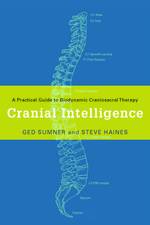 Steve Haines has been working in healthcare for over 20 years, and as a bodyworker since 1998. He studied Biodynamic Craniosacral Therapy with Franklyn Sills, Michael Kern and Katherine Ukleja. He is a UK registered chiropractor and also trained as a shiatsu practitioner. Steve lives and works between London and Geneva, and teaches cranial work internationally, including in Switzerland, North America and Malaysia.
Steve Haines has been working in healthcare for over 20 years, and as a bodyworker since 1998. He studied Biodynamic Craniosacral Therapy with Franklyn Sills, Michael Kern and Katherine Ukleja. He is a UK registered chiropractor and also trained as a shiatsu practitioner. Steve lives and works between London and Geneva, and teaches cranial work internationally, including in Switzerland, North America and Malaysia.
Ged Sumner is a practicing craniosacral therapist, craniosacral therapy trainer and chi kung teacher. He has also studied shiatsu, healing and attachment based psycho-analytical psychotherapy, and has a degree in Chemistry. He is the director of Body Intelligence Training, which offers biodynamic craniosacral therapy practitioner courses in Europe, North America and Australasia.
Here, Steve and Ged answer a few questions about their new textbook, Cranial Intelligence: A Practical Guide to Biodynamic Craniosacral Therapy.
How does your book support hands-on learning of Biodynamic Craniosacral Therapy (BCST)?
We were quite shocked to learn that there are videos out trying to teach cranial work as a distance learning course. In the first instance, watching cranial work being performed is like watching paint dry and secondly, students really need constant hands on feedback to support their developing perceptual skills. In the history of cranial work there is a strong oral tradition and preference for teaching by transmission. One of the senior biodynamic cranial osteopaths (Jealous) refuses to write and reluctantly, it seems, has recorded some CD’s of him talking. We do not go as far as that, we think there is a value in articulating theory and writing down exercises that people can practice for themselves. Our book is full of meditations and protocols that we have learnt from our teaching experience can work really well to help people more clearly feel their own bodies, other peoples bodies and our common relationship to the natural world. The book is aimed to compliment study on a two year training course.
The book talks a lot about ‘potency’. What do you mean by ‘potency’, and what is its significance for BCST practice?
Potency can be thought of as the cranial word for energy. Energy means lots of things to different people and is often a very fuzzy concept that is used as a catch all to explain interactions that are not well understood. My favourite definition of energy is that it is information moving through a field – a ‘field’ here meaning a zone of influence. Potency is a term used by Sutherland, the founder of cranial work. In a slightly more precise way than the common usage of energy, it allows us to describe the felt experience of BCST practitioners of an inherent potential in nature and in the body that organises, animates, and communicates. Sutherland used the image of potency as ‘liquid light‘ and the phrase ‘the fluid within the fluid’ to describe his experience of potency. He was very clear that expressions of potency are mediated through the fluids of the body. Other words commonly used alongside potency are tingling, shimmering, light, vibration, electricity, something moving and wind-like. Like the wind in a sail or the heat of the suns rays or the falling to earth of an object, we can perceive the effects of potency but its actual nature is illusive.
The book includes a practice development chapter that covers questions such as ‘Why do you want to become a Craniosacral Therapist?’ and ‘How do I earn a living as a Craniosacral Therapist?’ Why was it so important to include those questions?
Our observation, from running a teaching clinic for CSTs in London, of noticing and talking to other CSTs, of supervising students and practitioners, and being involved in teaching at four different biodynamic schools is that many people struggle to set up a practice once they qualify as a practitioner. They have life changing skills that can dramatically enhance the lives of their potential clients by helping them be in less pain, less emotional distress and have more vitality. However being a skillful therapist does not mean you will be a busy therapist. There are big issues to explore, and additional skills to learn, about being a self-employed, small business person in a competitive private health care market. Adult learners engage with training courses for many reasons, often at transition points in their lives. The questions above are an attempt to get people to think through some of these issues at an early stage in their training. The two year training is very demanding and requires a degree of maturity, self reflection and personal growth. Our experience is that this work can help a wide range of human suffering; people in chronic pain, people who have experienced trauma, people living with serious physical illness and people in profound emotional distress. It is good to realise the likely territory of their future professional life and to understand the commitment it involves if they want to become a practitioner of excellence.
For more info, watch this video with co-author Steve Haines.
Copyright © Singing Dragon 2010.
